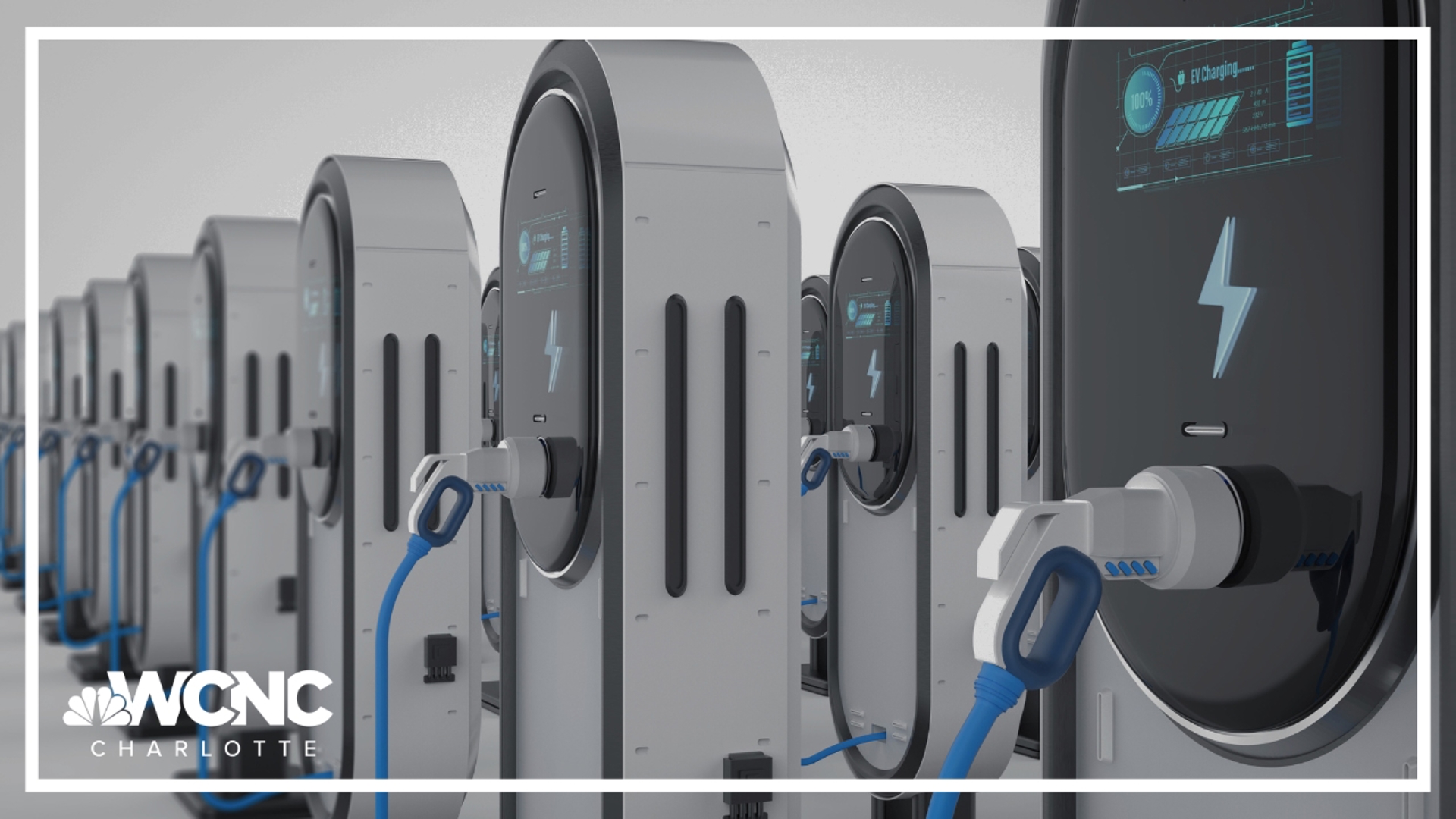NORTH CAROLINA, USA — Electric vehicle manufacturers are ramping up production to meet the federal government’s 2030 deadline. By then, half of all new vehicles sold in the United States will have to be zero emissions.
While the diligent work continues in the background around the nation, the North Carolina Department of Transportation has embarked on a journey to make this technology more attainable and accessible to all.
Green is everywhere in North Carolina, but it’s green energy that has officials with the NCDOT excited about the future of electric vehicles.
Heather Hildebrandt, the supervisor of NCDOT's statewide initiatives, said the department has been working tirelessly to get its plan on the road.
"We began tracking registration of zero-emission vehicles and we're glad to say that we've actually surpassed our 80,000 target a year early," Hildebrandt told WCNC Charlotte's Colin Mayfield.
RELATED: Duke researchers investigating water quality in 3 counties where lithium mining could happen again
Over $100 million is funneled through the National Electric Vehicle Infrastructure Program, or NEVI, which has helped the state pinpoint when charging occurs and where it would be most beneficial for drivers.
"We are building 36 or 37 total fast chargers and these chargers are capable of charging four vehicles simultaneously at 150 kilowatts," Hildebrandt said.
North Carolina is building corridors along the busiest routes, making in- and out-of-state travel easier for everyone. Chargers will be located every 50 miles and within a mile of highways along almost 4,000 miles of alternative fuel corridors statewide.
"One of our major goals for our program is to make sure new technology, like electric vehicles, are accessible to anyone," Hildebrandt said.
Hildebrandt said their research shows that EV owners typically own their own homes and have access to charging at home or work. This makes the technology easier to adopt and less expensive and NCDOT hopes this continues around the state.
Leading the nation in EV initiatives doesn't come by chance. States like North Carolina and others around the country are using data points that help utility companies and EV manufactures better understand how to meet demand.
That demand is growing rapidly as the Federal Government invested billions to get more zero-emission vehicles on the road by 2030.
With $7.5 billion invested to build out charging corridors and a promise to electrify the federal fleet, the Biden administration has gone all in on this evolving technology. In the race to zero-emission technology, Tesla has been the leading manufacturer of EVs and set the standard in terms of its charging technology.
In fact, it's been coined the "North American Charging Standard," as other companies have adopted the technology.
The scale of the North American Charging Standard is vast, and the demand will be as well.
To measure that and make sure demand is met, organizations like the Electric Power Research Institute or EPRI are preparing the electric grid to support accelerated development of EV infrastructure.
"Companies that have an electric fleet have to know how many trucks they will have on the roads in the next 10 years," Director of the Transportation Program at EPRI Britta Gross told WCNC Charlotte. "We need to figure out which utility can handle that load and what will happen with the grid at that time."
In EPRI's EVs2Scale program, the organization is collaborating with companies like Amazon, Tesla, the United States Department of Energy along with the leading electric utility companies in America.
"Confidence is the biggest factor in all of this. To drive confidence, we need the data and we have to know or the utilities have to know when and where is that load coming. So our challenge is, can we develop and introduce tools for the public to use, that will allow massive industries to see what's happening in real time," Gross said.
EPRI is working to find a solution for optimizing charging, especially while vehicles are idle.
"What an opportunity to optimize when those vehicles are charged, where they are charged and use nighttime. There's never a peak at that time of day so we have big valleys that we could fill," Gross explained.
EPRI has released an interactive online electric transportation grid planning tool. It's free and allows users to explore how quickly EVs are expected in different regions but it also identifies energy needs across the US.
Contact Colin Mayfield at cmayfield@wcnc.com or follow him on Facebook, X and Instagram.

